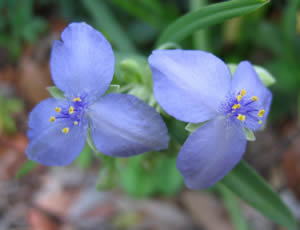Radioactivity 101 |
m | ||||||
Posted to Subscribers on 13 March 2011 |
|||||||
|
|
Dear Subscribers, Some of you might want to skip this, but most of you will feel better when you understand the mechanisms at work. There are a lot of different radioactive materials and each has similarities to organic substances normally used by the body. An example that is sometimes used is that strontium-90 is absorbed by bones and teeth because the body treats it as if it were calcium. One theory advanced by those in the holistic health world is that the body will not absorb strontium if it has enough calcium. Moreover, the strontium will be replaced by calcium if the body is supplied with a proper form of calcium. This is why we should not panic and buy the first substance recommended for radioactivity but rather wait to see what is being released into the atmosphere. Meanwhile, there is corroborative material from the allopathic world of medicine in the sense that patients who are being treated with radioactive substances are advised to forego natural forms of that substance for some period following treatment. In short, the theory might be correct and since we don't really have better strategies for coping, we will proceed one step at a time now with what we think is known. At the moment, we are not 100% certain about which cesium has been released but we do know that the body "views" cesium as it would potassium. So, unlike iodine which accumulates in the thyroid, cesium accumulates mainly in the reproductive organs and muscles and secondarily in the liver and kidneys and thence into the blood and hence everywhere else in the body. Of all the known agents for addressing cesium, green sea vegetables are regarded as the most effective. The required dosage is not all that great: 2-3 ounces a week. During times of direct exposure, the dosage can be increased to double or even triple the preventative amount. However, excessive intake is not necessarily good because there will be quite a bit of iodine in the seaweed. Other sources of potassium are of course bananas, beans, whole grains, seeds, and vegetables, especially lima beans, spinach, and winter squash. Some fruits are also high in potassium: dried apricots, honeydew melons, oranges, and raisins. Since potassium is critical to electrolyte balance, be careful of the amount of salt intake lest you interfere with potassium's role. So that we all appreciate the issues at hand, we are talking about a radioactive substance that is released in vapor form. It is highly reactive with water, explosive. This means that the damage of a direct contact would be an instantaneous burst when the radioactive cesium makes contact with moisture, but few people will make this kind of contact because the radioactivity will be carried by the wind and "fallout" with precipitation. It will then contaminate the natural environment. We could hypothesize as to what exactly happens to the plant to produce this change and it would at minimum seem that the bioflavonoids are impacted because the colors of a plant are a clue to the flavonoids. We all need to remember that the nonverbal species are pictorial and use imagery to communicate! Here, nothing is in bloom yet, not even the very, very late crocus flowers!!! So, here is the problem: fallout will accumulate in the soil and be absorbed by plants which then yield a certain amount of radioactivity when ingested by foraging animals or people. In short, our world is polluted so in addition to the immediate risks, there are longer-term risks, meaning in this case that the uptake of potassium needs to be consistently somewhat higher than might ordinarily be the case. This may almost be rocket science, but the management of the risks is within the scope of everyone's potential. To explain this further, let me go into the structure of kelp and its gelatinous constituent, sodium alginate. This is not assimilated but it bonds. It means that the moist and mucilaginous material can absorb and haul out radioactive particles. We use this substance all the time to thicken well known food products. Just look for "agar" on the ingredients list of foods. Combing Steven Schechter's book for nuggets, he cites studies on rats who were fed beet pulp. They were able to prevent absorption of cesium-137. I happen to hate beets but I know the red agent in beets is a hydroxyl free radical scavenger. Nutritional yeast is another excellent food for the present situation. It helps to rebuild cells that are damaged by radiation. This is something I use extensively. It is nonviable because it is roasted so do not worry about a "yeast infection". As I said, I will keep sending short messages that are less overwhelming. Many blessings, Ingrid
Copyright by Ingrid Naiman 2011
Radiation: the Fukushima Nuclear Hazards || Nuclear Power
|
||||||
Home || Contact Us |
|||||||
No content on any of the pages of this web site may be reproduced without written permission of Ingrid Naiman and Seventh Ray Press, publisher of this site. |
|||||||
|
|||||||


